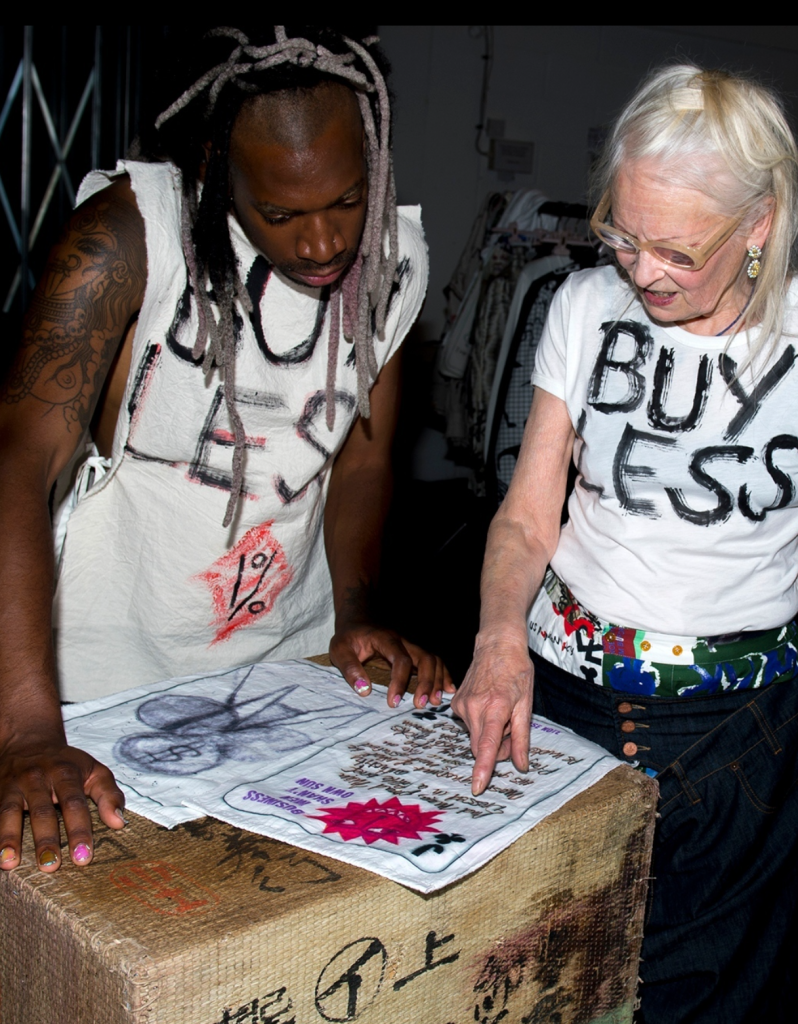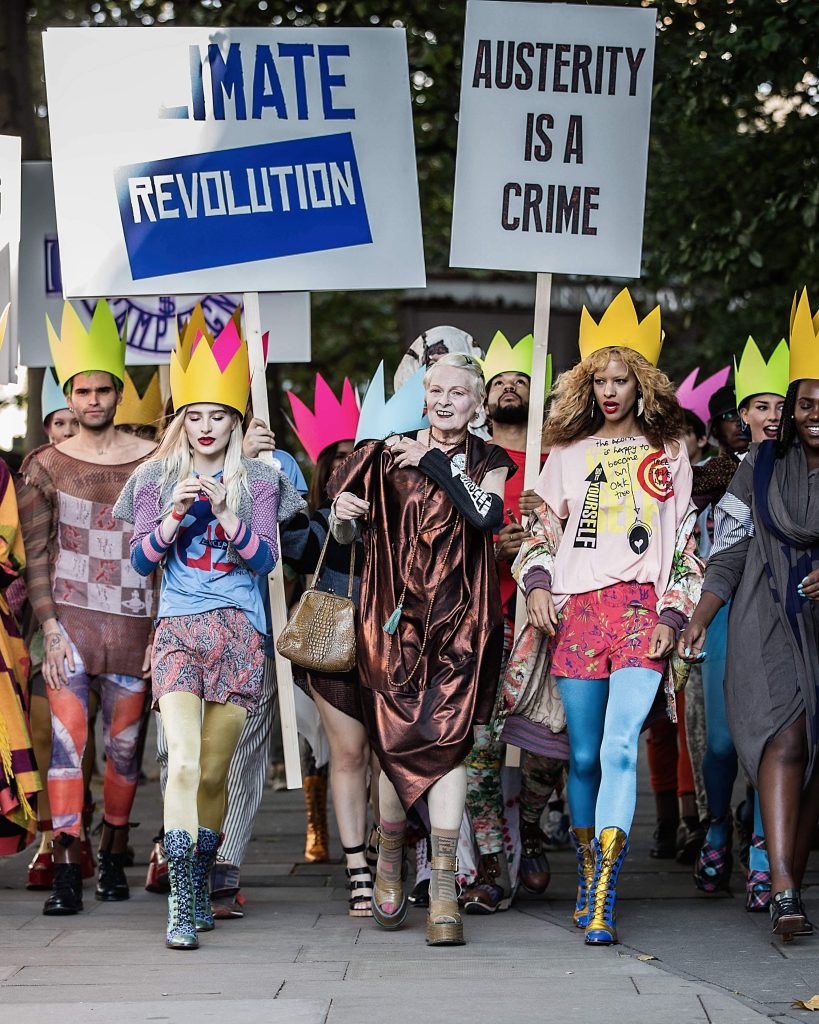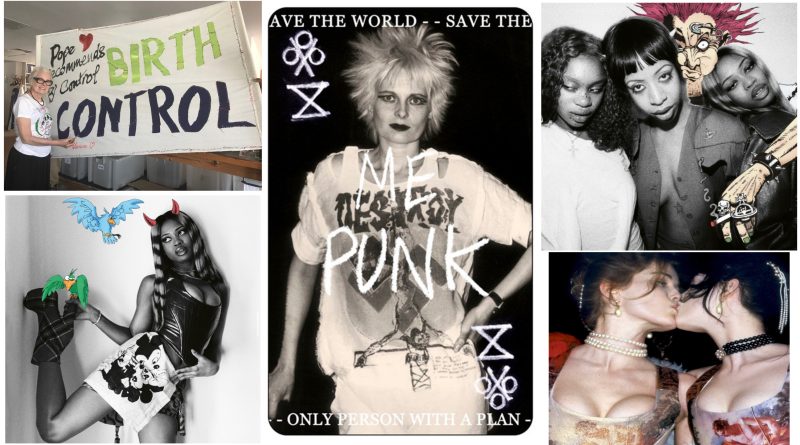Vivienne Westwood Memoriam
The Ledger is paying tribute to one of the most influential figures in Punk and New Wave fashion.

It’s a new year full of new beginnings and opportunities for the alumni of the University of Washington Tacoma, and a chance to learn about things you perhaps were not very familiar with the year before. Unless you’re a punk kid, baby bat, or fashion savant, you perhaps haven’t heard the full story of one of the most prominent women in fashion history. It’s my pleasure to introduce the vibrant life of Vivienne Westwood to our little campus community.
Vivienne Isabel Swire was born on April 8, 1941, in Glossop, Derbyshire to her parents Gordon and Dora Swire. Despite her humble upbringing, Westwood was introduced to the world of art after moving to Harrow, Greater London. There, she began taking silversmithing lessons at the University of Westminster, where she found enjoyment in creating her own jewelry pieces.
At the same time, she became a primary school teacher while continuing to craft jewelry. She began selling these pieces in her own stall which she set up on Portobello Road, Notting Hill District. It was during her wedding on July 21, 1962 that Westwood created her first clothing piece from scratch: her wedding dress.
Westwood’s most prominent era began after her divorce from her first spouse and her new marriage to Malcolm McLaren. It was during the early 1970s that this power couple began designing their own clothes. The duo’s signature motifs included oversized jumpers, provocative lettering written on by hand, loosely knit sweaters that emphasized bare skin and knife slashed t-shirts. These were then worn and displayed to the public by the infamous punk band, Sex Pistols, who were managed by McLaren at the time.
Carefully curating and creating pieces for the band, Vivienne found her place leading the punk scene alongside her husband. Together, they opened their first boutique named “SEX;” a name that was meant to challenge current societal norms on intimacy and sexuality and intimidate those with traditional values. The store had black, tinted windows, leading many to believe it was a sex shop. But, not being able to see inside urged many curious passersby to make a stop inside and realize that it was instead a fabulous underground boutique with the aesthetic of underground debauchery. SEX quickly became a meeting place for all London punks, allowing for a community of free thinkers and social justice pioneers to flourish away from the pre-existing monarchy in England.
Her style during SEX’s era was marked by her use of frayed knits, bold reds, disheveled white tees, tartan textiles and drippy hand-drawn texts that carried the message of defiance, rebellion, and anarchy. Westwood was a singular, untameable force inside the fashion world. But even more so inside the punk subculture.

It was her powerful voice and unrelenting belief to do what is morally right that won her the title of “the mother of punk.” As well as her activism early on in her life, up until her last days. Vivienne ingrained the importance of climate change activism, equality, body positivity, sex positivity, and anti-capitalist/fascist propaganda inside what most people consider to be simply just “edgy clothing.” For punk, being a social justice activist is a requirement. Punk is forward-thinking, the love of all things provocative, and the belief that the color of your skin, your race, your orientation, your sex, your gender identity, and the way you choose to present yourself should be accepted.
Vivienne recalled her time as a punk in the 1970’s during a 2018 interview: “I was so upset with what was going on in the world. I just couldn’t stand the idea of people being tortured and that we even had such a thing as war. I hated the older generation, who had not done anything about it. Punk was a call-to-arms for me.” She also stated: “What is a punk attitude? I guess I’m a punk because I’m a fighter. You’re born with the character you’ve got, and I will always fight. I can’t help it.”
Vivienne made it her life-long mission to be politically involved and societally conscious. Not only did she ingrain her values into her designs, but she also spoke out publicly about world issues, using her platform as an influential figure to spread awareness about climate change and anti-war sentimentality. She was never late to jump and speak up on any issues that would arise: including the recent war in Yemen in which she partnered with the Campaign Against Arms Trade (CAAT) to stop the spread of the UK supplying arms to Saudi Arabia.
She has also been vocal about her strong stance in feminism and has openly supported open access to birth control and safe abortions as of 2018. She paid homage to her sex positive values by creating an entire jewelry collection showcasing erect male genitalia, which became an instant iconic symbol inside her brand. Furthermore, she created her own non-profit campaign, Greenpeace, where she began gathering funds to stop the drilling of oil in the Arctic by the gas company Shell. This campaign also aimed to raise awareness and protect the fragility of arctic wildlife as of 2013.
Despite certain controversies pertaining to her production methods in recent years, Vivienne kept true to her word and refused to use animal-derived materials in all of her collections. She solidified her stance against animal cruelty by joining arms with the Humane Society and created the hashtag #FurFreeBritain, supporting the ban of fur trading and cruel fur farms from both inside the UK and overseas.
Vivienne was ahead of her time, therefore causing a ripple in what is now a tidal wave inside the social justice movement. She was recognized by both the British Royal Society of Arts and the British Order of Chivalry as a prominent designer, winning her the title of officer of the OBE (Order of the British Empire): Dame Vivienne Isabel Westwood. Westwood died on December 29th, 2022, in Clapham London at the age of 81.
As an active appreciator of alternative subcultures and a veteran goth, it was a must to pay homage to one of my muses. Especially after her unfortunate passing. Vivienne not only inspired an entire generation of free-thinkers, but she also inspired me to be loud, and unapologetically me. Being able to convey a message through clothing and makeup revolutionized what appearance was to me. I was brought up in a culture that – though vibrant – did not take kindly to “taboo” subjects such as death and sex. The color black was always associated with bad omens.
It was only after my 16th birthday that I began learning about the world of fashion. Not just to aesthetically please, but to cause emotional reactions. Movements like punk and goth go even further, carrying decades of history with them. They exist to show others the beauty in the unexpected and unloved. It was through artists like Vivienne Westwood that I learned that life is truly too short to not make a statement. Dressing for self-fulfillment and impact is perhaps the most important lesson that she has taught me. For that, I thank her.
“You have to go faster than the system.”
Vivienne Westwood, 1941-2022




